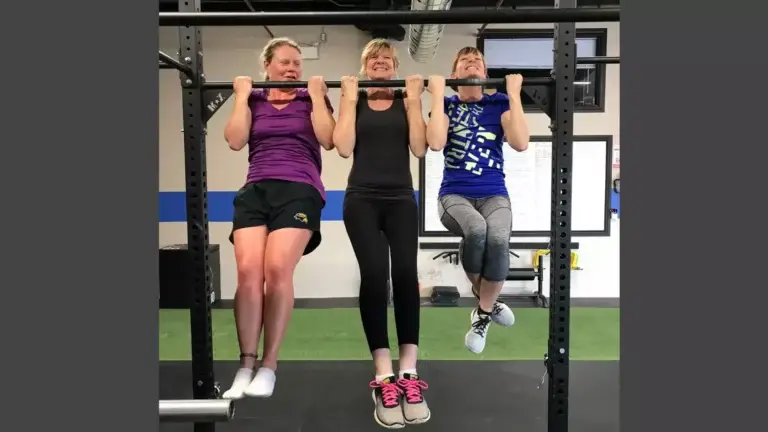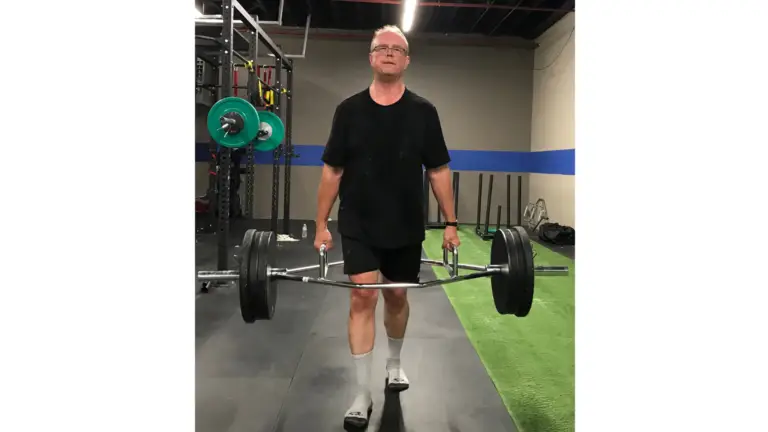
One of the most frequent questions we get from personal training clients at Lean Strong Fitness & Wellness is, “How much cardio, intervals, and weight training do you need to do to reach your fat loss goals?” It’s probably better marketing to say “this is our formula”. However, the real answer (and why we customize habits, nutrition, and programs) is it really depends on:
- Your goals
- How much time you can commit to your fitness routine in an average week (not your ideal week)
- How active you are in daily life

Question 1 – What is Your Goal? In terms of a fat loss goal, since that’s the most common goal we see, the purpose of exercise for fat loss is threefold:
- Maintain muscle mass
- Maintain and increase metabolism
- Burn extra calories
It’s been proven over and over again that exercise alone simply isn’t a good way to lose fat. Nutrition trumps exercise for fat loss, and nutrition + exercise is the holy grail.
- Exercise-wise, this means we need to structure our weekly program accordingly. In order of priority:
- Weight training to maintain and increase muscle mass and metabolism, and burn extra calories
- Interval/circuit training to increase metabolism and burn extra calories

Low intensity aerobic work to burn extra calories Question 2: How much time can you commit to your fitness routine in an average week? If you can commit 1-3 hours per week, stay at #1 – weight training. Keep in mind weight training includes some circuit/interval work, mobility, and core, so it’s a great bang for your buck time-wise. If you can commit 3-5 hours per week, that’s where you start to add in some interval/circuit training for the extra calorie burn and metabolic benefits. You’ve checked the box for weight training benefits, so added intervals help burn some extra calories and increase metabolism. Lastly, if you can commit 5+ hours per week, that’s when you add in extra aerobic work. Think walking every day, hiking, and other low impact activities that go above and beyond daily life. An extra hour on the treadmill might not be as important as you think – keep reading. Question 3: How Active Are You in Daily Life? If you’re already getting 10,000 steps per day, adding in a cardio workout probably won’t move the needle for you – you’re already getting the benefits from daily activity. If you’re very sedentary and at a desk 8+ hours a day, you won’t want to take away from the first priority of weight training, so this is where you should focus on habits that include activity. 10 minute walks after meals, an evening stroll with your partner or family, or swapping coffee “dates” with friends for hiking dates. It’s almost always better for long term benefits to make being active part of daily life than to hop on a treadmill.

But don’t I have to do cardio to lose weight? The short answer is no. This idea has been perpetuated for years, and after 13+ years in the industry I honestly can’t say exactly why (likely it’s just marketing that’s slowly brainwashed us, but I digress…). There was research, way back when, showing cardio at a certain heart rate is the “fat burning zone”, but when they dug deeper the benefits weren’t as strong as they initially thought. And more recently, there has been research to show that there comes a point where if you add too much exercise purely for the sake of burning calories (cardio), you actually burn less calories during the day via NEAT. NEAT stands for non-exercise activity thermogenesis, and in simple terms it’s all the calories you burn in a day from fidgeting, walking to your car, moving around, and simply being alive. As strange as it sounds, if you over-exercise, especially with cardio, your body compensates by burning less calories in daily life and that extra exercise doesn’t change anything. Weird, right? This is why there shouldn’t be a lot of emphasis on hopping on the bike or treadmill for an hour a day – it’s better to build the cardio piece into your life as daily activity habits. It doesn’t feel like work, it’s better for your mindset, and it helps prevent your body compensating by burning less calories.

So what SHOULD I be doing to reach my fat loss goals? For people 45-50+, the sweet spot is typically 3-4 workouts per week (approx. 3 hours per week) with an emphasis on strength training to maintain and build muscle, increase metabolism, and of course burn some calories. Considering, as we age we typically lose muscle mass, and metabolism slows down a bit, it’s absolutely critical to get in weight training first. Weight training maintains and builds muscle so everyday life is easier, helps improve nagging aches and pains, and you essentially slow down age related challenges. Because weight training does SO MUCH more than help you lose fat, it’s first priority. Then if you can commit more than 3 hours, add interval/circuit work and low intensity cardio (walking), and focus on nutrition. An hour spent on making sure you are set nutritionally for the week does a lot more good than an extra hour of cardio once you are above the 3 hour mark. Lastly, focus on simply being active and enjoying what your body can do. Go for a walk with your partner after dinner. Play with kids or grandkids at the park. Play with your dog instead of just throwing the stick for them. Bike to the store instead of driving. Try a new sport or activity – one client recently started playing Pickleball, and loves it! Get your weight training in (3 hours/week). Add in circuits/intervals if you can commit more than 3 hours/week consistently. Focus on nutrition. And make being active in daily life the new normal. Contact us here to learn more about building a program to help you reach your goals, following the priorities above.



